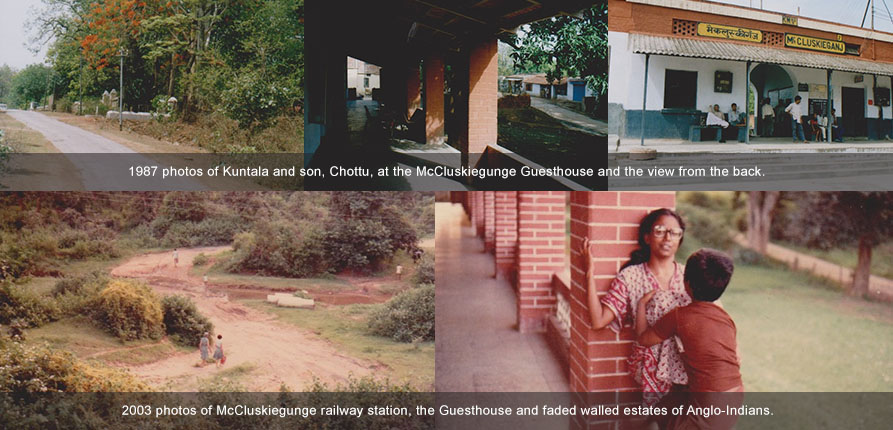Anglo-Indians
One of Kuntala’s early research topics was to document the history of McCluskiegunge, a settlement set up in the early 1930’s as an utopian homeland for Anglo-Indians in the face of the decline of the British Raj. McCluskiegunge, named after the main proponent for the homeland, Mr ET McCluskie, is situated about 60 km SW of Hazaribagh and a similar distance NW from the state capital of Jharkhand, Ranchi.
It was thought then that maybe as much as 100,000 ha of land could be leased. Initially, 163 Anglo-Indians from all over India and also Burma and Pakistan took up selections whose average area was ~ 5 ha, though a few exceeded 40 ha. Perhaps about 5000 ha were eventually taken up.
This research into the whys, wherefores and questions of identity resulted in a book, published by Minerva, Calcutta in 1990 ‘ In Search of a Homeland‘. A chapter from this book was recently reprinted in “The International Journal of Anglo-Indian Studies (2015, vol 15, 55-78).”

The Anglo-Indian community has mostly faded away, due the impacts of Independence (many Anglo-Indians emigrated) and the passage of time. Nowadays, large open-cut coal mines are only a few kms away from McCluskiegunge and it is now in the Naxalite-Maoist belt which stretches along the eastern side of India. In 2003, our vehicle was stopped by a Maoist blockade and we were surrounded by about 100 bandana-wearers beating our car with sticks. David got out, perhaps unwisely, to remonstrate – fortunately they were taken aback by the presence of a whitey. We had a local friend with us and after some discussion, they allowed us to proceed. Ours was the only vehicle to get through that day. They had legitimate complaints – no electricity, no telephones.
That evening at the McCluskiegunge Guest House, we treated the cadres to a ‘few’ beers!
Near McCluskiegunge is a small Birhor settlement. Birhors are a particular vulnerable and sparse tribal group scattered in this part of India; originally hunter-gatherers now struggling to survive in the modern world. They live in humpies, a sort of vegetarian igloo. Attempts to provide then with very basic housing were not that succesful. It is amazing that groups like the Birhors can still survive in a crowded developing country such as India. Maybe not for long.

